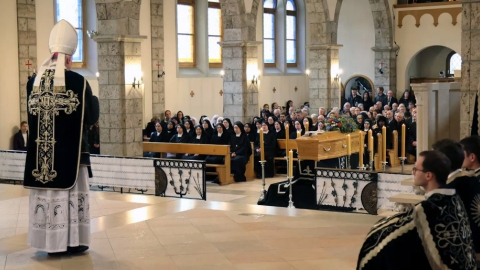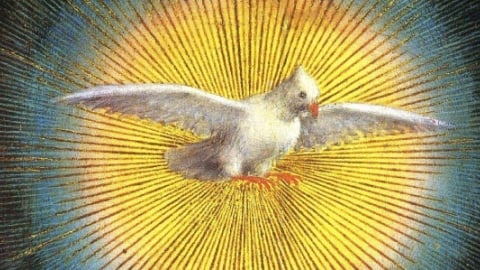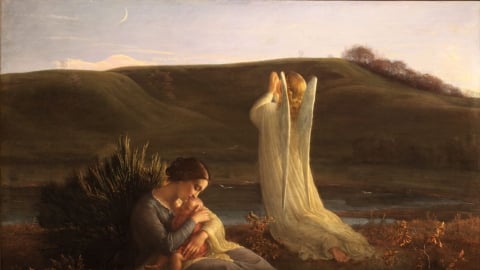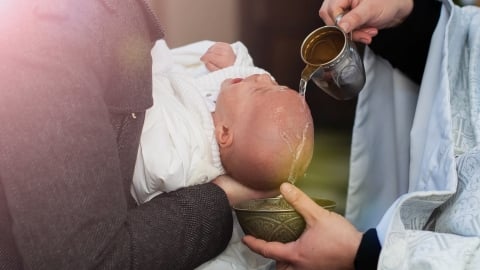The Roman Custom of Eating Snails on the Feast of St. John the Baptist

While the liturgy of today is beautiful, the Roman tradition around this feast – and the vigil preceding – can be puzzling. What does witchcraft, bonfires, bells, herbs, and snails have to do with St. John?
The feast of the Nativity of St. John the Baptist falls very close to the summer solstice, which was celebrated as a major festival in nearly every pagan culture. The Romans were no exception, honoring their goddess Vesta on the Vestalia festival, which featured Romans sacrificing an unborn calf to this goddess of the hearth.
It was also seen as a day primed for the movement of ghosts and evil spirits throughout the living world, since the night was at its shortest. Herbs were utilized to ward them away, and bonfires were stoked to bring light to the short night. Once Rome became Christianized and the Nativity of St. John the Baptist was fixed on this day, the pagan traditions became baptized.
And now the ghosts had a name. The belief in witches wandering on this night was still felt strongly by the Christian Romans. But instead, the witches and spirits were said to gather on the Laterano field, outside the church of St. John the Baptist, summoned by the ghosts of Herodias and his daughter Salome. In life, they demanded the head of John the Baptist. In death, as the tradition went, they were cursed to wander the earth on brooms to expiate their sins. It seems the notion of witches and broomsticks comes from this legend.
Spirits must be warded off – and the Romans had a ready-built remedy, passed down from their pagan ancestors: bonfires, herbs, and noisy bells and other devices would all keep Herodias, Salome, and their minions at bay. Romans would light torches, and make their way from their neighborhoods to the Piazza San Giovanni in Laterano, where they would spend the night singing, praying, holding crosses high, and doing their level best to prevent these spirits from gaining a foothold among the living.
Of course, warding off the ghosts of such malefactors is hungry work. So vendors would set up stalls on the piazza with nourishment. The choicest option – snails. Since ancient Roman times, eating snails, whose tentacles represented discord and apprehension, meant destroying misfortune. Additionally, it was a quite affordable source of protein, so when cooked over a fire, and liberally sprinkled with spirit-repellent herbs, these snails became the must-have snack for the masses during the all-night vigil when Salome and Herodias were at their most dangerous.
Speaking of these herbs, it was a common practice to pick a specific herb that was abundant in late June during this night – and you would be very lucky indeed if it was wet with the dew. Ancient Romans believed that the dew had healing powers, and as Saint John baptized with water, it would be very easy to ascribe miraculous powers to any herb that was coated with dew on this night. We know this herb today as “St. John’s Wort.”
These prayers, revelries, and bonfires lasted until dawn, when the Pope arrived at Saint John Lateran to celebrate the morning Mass. And the faithful, weary from their important work, but satisfied that they had kept Rome safe for another year, filed in behind him to honor the Precursor.
While the cacophonic, fiery celebrations have died down in the times of modern Rome, a remnant is found on the menus of tavernas – the end of June is still the best time to find Lumache alla Romana, or “Roman Snails” on the menu.
The Liturgy of the Nativity of St. John the Baptist
Ordinarily the Church observes the day of a saint's death as his feast, calling it his dies natalis, or the day of his birth into heaven. To this rule there are two notable exceptions, the birthdays of Blessed Mary and of St. John the Baptist. All other persons were stained with original sin at birth. But Mary, already in the first moment of her existence, was free from original sin, and John was cleansed of original sin in the womb of his mother. This is the dogmatic justification for today's feast.
In the breviary St. Augustine explains that the reason the day of St. John’s birth is sacred, whereas in the case of other saints, only the final day of their lives is honored, is that the Lord willed to announce to men His own coming through the Baptist, lest if He appeared suddenly, they would fail to recognize Him. John represented the Old Covenant and the Law. Therefore he preceded the Redeemer, even as the Law preceded and heralded the new dispensation of grace.
The birth of Jesus is observed on December 25 at the time of the winter solstice, while the birth of His forerunner is observed six months earlier at the time of the summer solstice. Christmas is a "light" feast; the same is true today. The popular custom centering about "St. John's Fire" [bonfires made on the vigil of the feast] stems from soundest Christian dogma and could well be given renewed attention. St. John's Fire symbolizes Christ the Light; John was a lamp that burned and shone. We Christians should be the light of the world.
Timeless Italy Travels - history.com - sspx.org - 06/24/21





